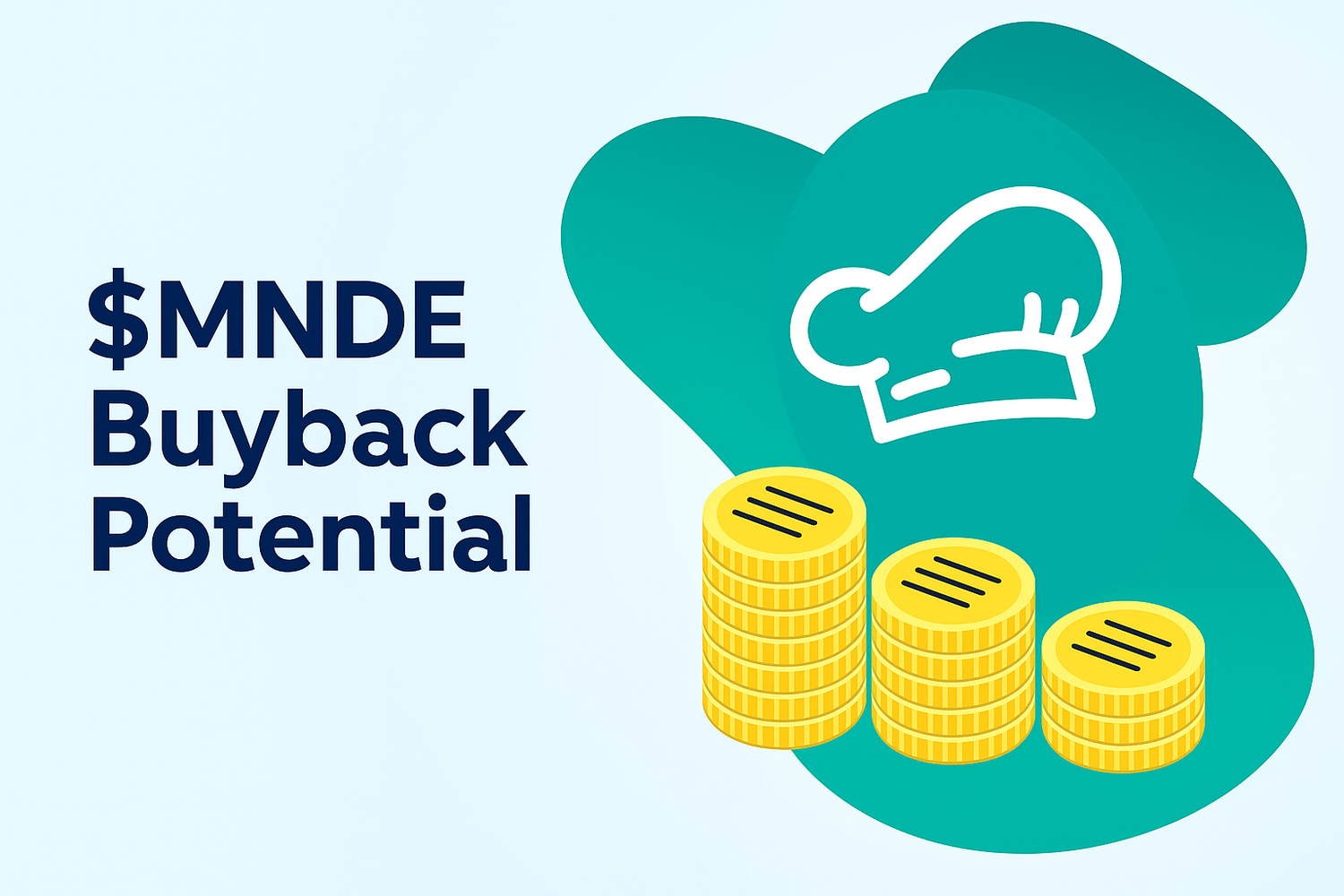
Beoordeling van het $MNDE-inkoopplan van Marinade: Inkomsten, Deflatie en DAO-strategie
Verwacht jaarlijks deflatiepercentage: 4,9% van totaal $MNDE aanbod
- Geplaatst:
- Bewerkt:
Marinade plant een strategische aanpassing van zijn eigen tokeneconomie. Het nieuwste voorstel, MIP.11, heeft als doel om 40% van de SAM prestatievergoedingen—die voorheen in de DAO schatkist zaten—om te buigen naar het terugkopen van $MNDE tokens van de open markt. Als deze maatregel wordt aangenomen, zal niet alleen het circulerende aanbod van $MNDE&rsquo verminderen, maar ook het langverwachte nut voor houders herstellen.
De beslissing is nu in handen van de gemeenschap en zal worden afgerond door middel van een on-chain marktstemming beheerd door MetaDAO.
Waarom dit belangrijk is: SAM-inkomsten en de groeiende rol ervan
Marinade heeft zich ontpopt als een van de meest innovatieve staking protocollen op Solana, grotendeels dankzij haar Stake Auction Marketplace (SAM). SAM stelt validators in staat om te bieden op inzetten in ruil voor hogere opbrengsten voor stakers, wat helpt om kapitaalefficiëntie te optimaliseren en tegelijkertijd substantiële protocolinkomsten te genereren.
Inkomstenbronnen voor Marinade zijn onder andere $SOL inflatie, MEV (Maximal Extractable Value) en vergoedingen van SAM. Terwijl 90,5% van die inkomsten terugvloeit naar de stakers, vloeit 9,5% naar de DAO Schatkist—fondsen die nu worden voorgesteld voor gedeeltelijke omleiding naar $MNDE buybacks.
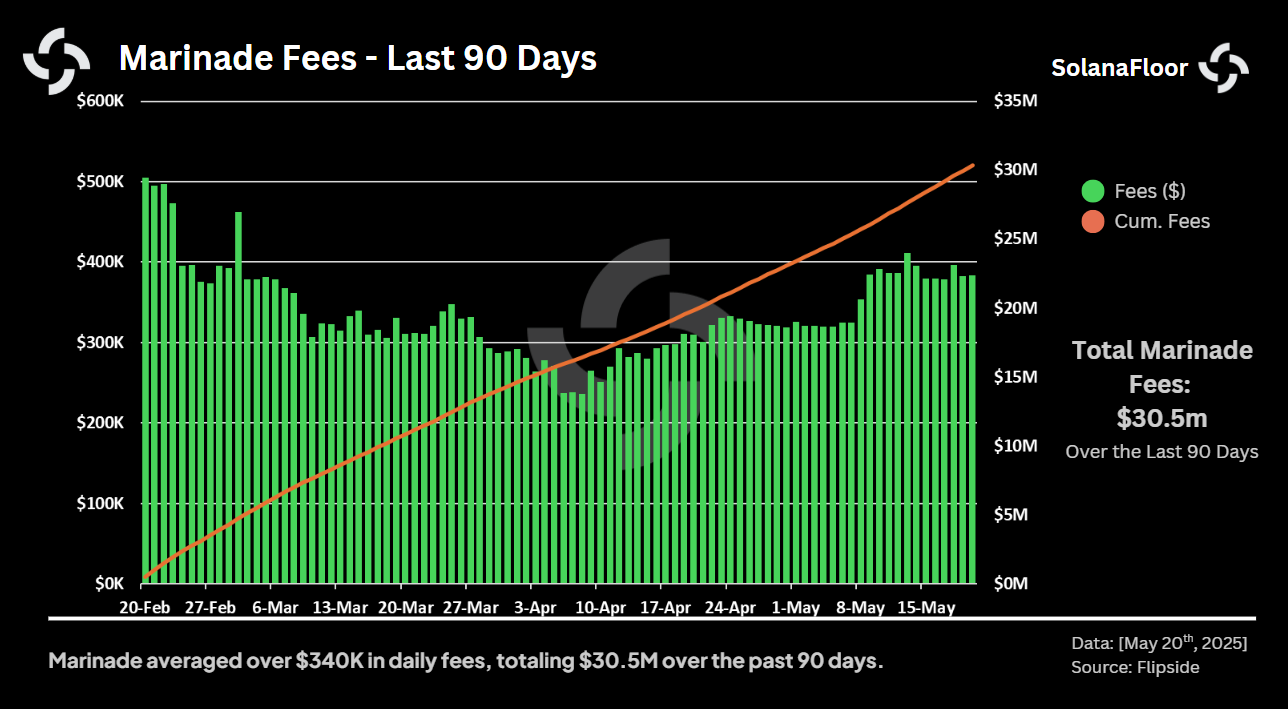 Volgens Flipside data, heeft Marinade de afgelopen 90 dagen meer dan $30,5 miljoen aan vergoedingen gegenereerd. Meer recentelijk schommelden de gemiddelde dagelijkse vergoedingen rond de $380.000, met af en toe pieken van meer dan $411.000 op dagen met veel Solana-activiteit. Zelfs tijdens perioden met weinig verkeer daalden de dagelijkse vergoedingen zelden onder de $250.000—een bewijs van de robuustheid van Marinade’s inkomstenstromen.
Volgens Flipside data, heeft Marinade de afgelopen 90 dagen meer dan $30,5 miljoen aan vergoedingen gegenereerd. Meer recentelijk schommelden de gemiddelde dagelijkse vergoedingen rond de $380.000, met af en toe pieken van meer dan $411.000 op dagen met veel Solana-activiteit. Zelfs tijdens perioden met weinig verkeer daalden de dagelijkse vergoedingen zelden onder de $250.000—een bewijs van de robuustheid van Marinade’s inkomstenstromen.
Buybacks, Deflatie en Token Utility
Onder MIP.11, 40% van de DAO’s aandeel van deze inkomsten—gelijk aan 3,8% van de totale protocol inkomsten—zou worden toegewezen aan $MNDE buybacks.
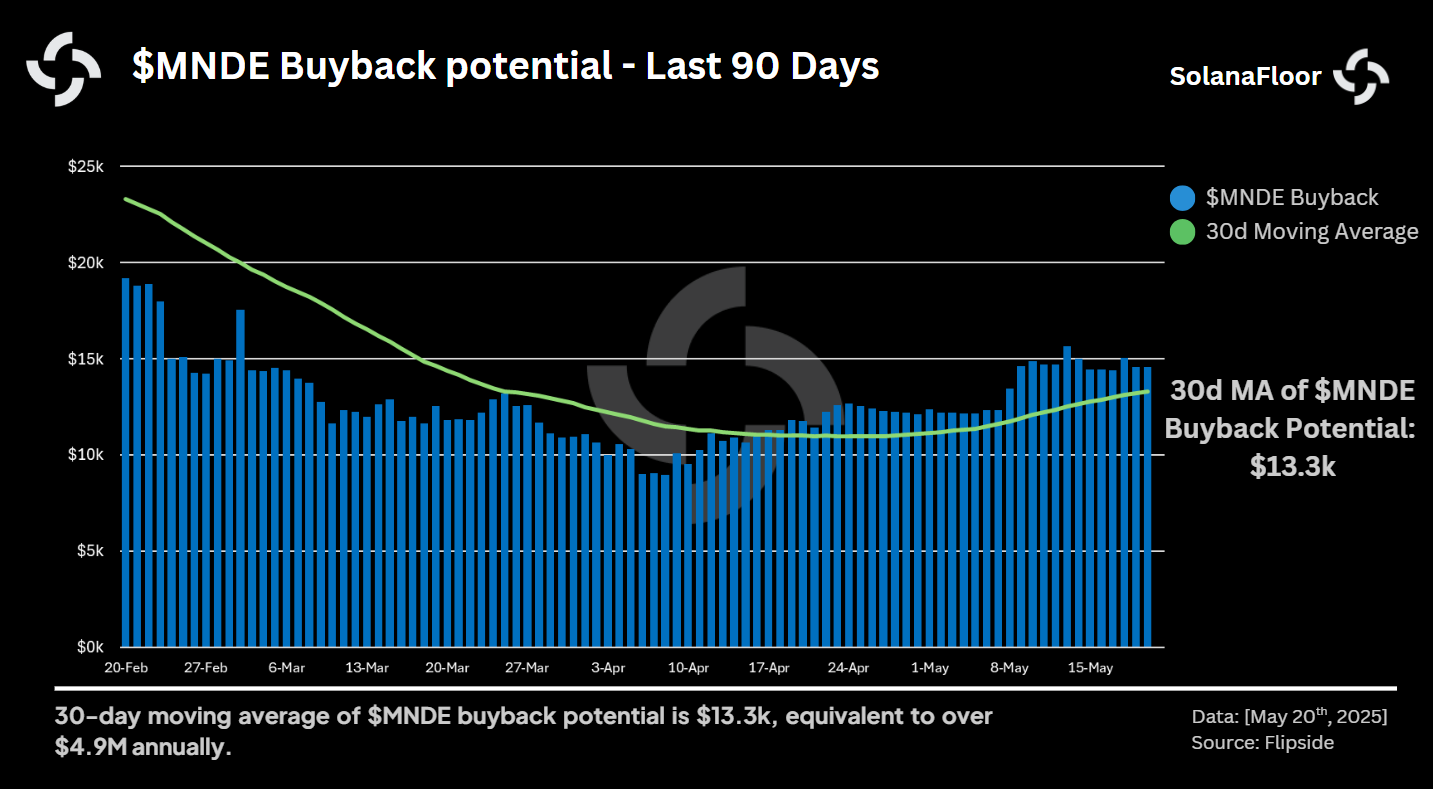 Crunching the numbers reveals that the $MNDE buyback potential over the last three months has rangeed from $9,000 to $19,000 per day, with a 30-day moving average of approximately $13,300. Op maandbasis vertaalt zich dat in $9,000 per dag. Op maandbasis komt dat neer op ongeveer $398.900 en op jaarbasis op maar liefst $4,9 miljoen.
Crunching the numbers reveals that the $MNDE buyback potential over the last three months has rangeed from $9,000 to $19,000 per day, with a 30-day moving average of approximately $13,300. Op maandbasis vertaalt zich dat in $9,000 per dag. Op maandbasis komt dat neer op ongeveer $398.900 en op jaarbasis op maar liefst $4,9 miljoen.
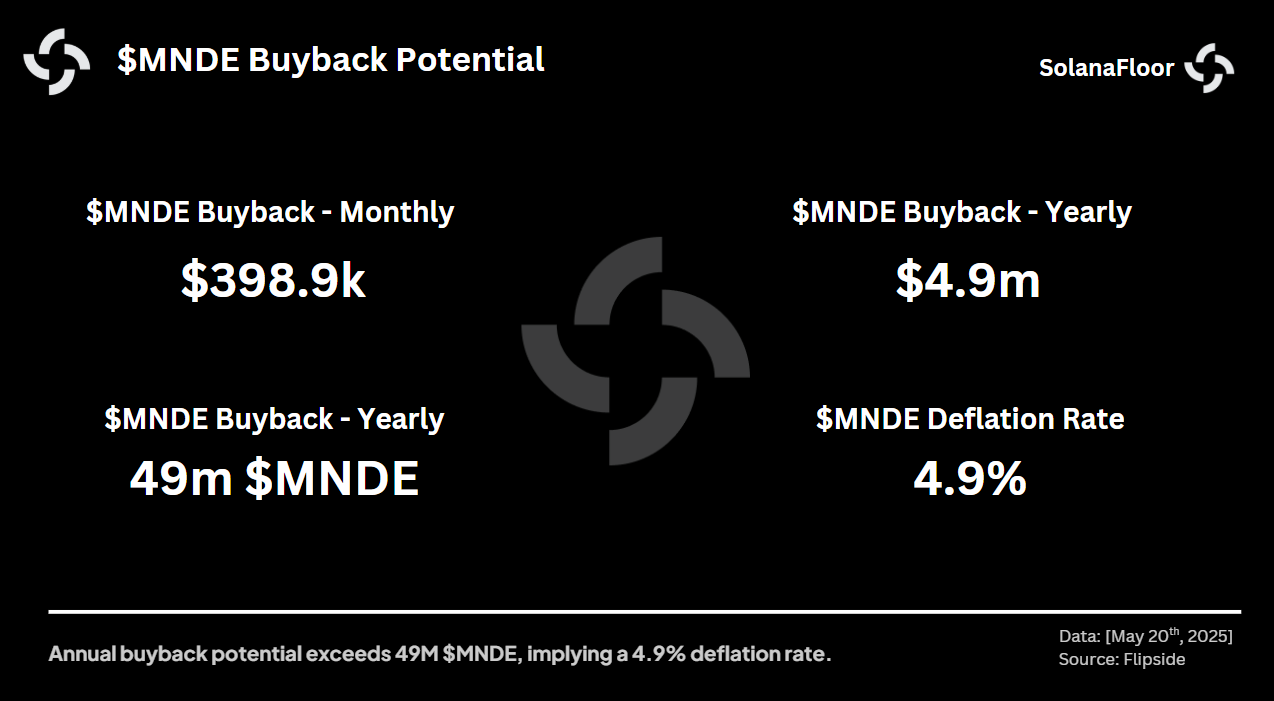 Bij de huidige $MNDE-prijzen zou dit niveau van buyback-activiteit jaarlijks meer dan 49 miljoen $MNDE tokens uit omloop nemen. Gezien het feit dat het totale aanbod 1 miljard is, introduceert het voorstel een effectieve deflatie van 4,9% per jaar—een belangrijke hefboom om de token’s prijsbodem en nutsverhaal te versterken.
Bij de huidige $MNDE-prijzen zou dit niveau van buyback-activiteit jaarlijks meer dan 49 miljoen $MNDE tokens uit omloop nemen. Gezien het feit dat het totale aanbod 1 miljard is, introduceert het voorstel een effectieve deflatie van 4,9% per jaar—een belangrijke hefboom om de token’s prijsbodem en nutsverhaal te versterken.
Hoe verhoudt dit zich tot Jito’s $JTO?
Het voorstel trekt onvermijdelijk vergelijkingen met Jito, Marinade’s primaire rivaal in de Solana staking ruimte. Niet lang geleden kondigde Jito zijn eigen terugkoopinitiatief aan voor zijn inheemse token, $JTO, dat buzz genereerde vanwege zijn gedurfde deflatoire houding.
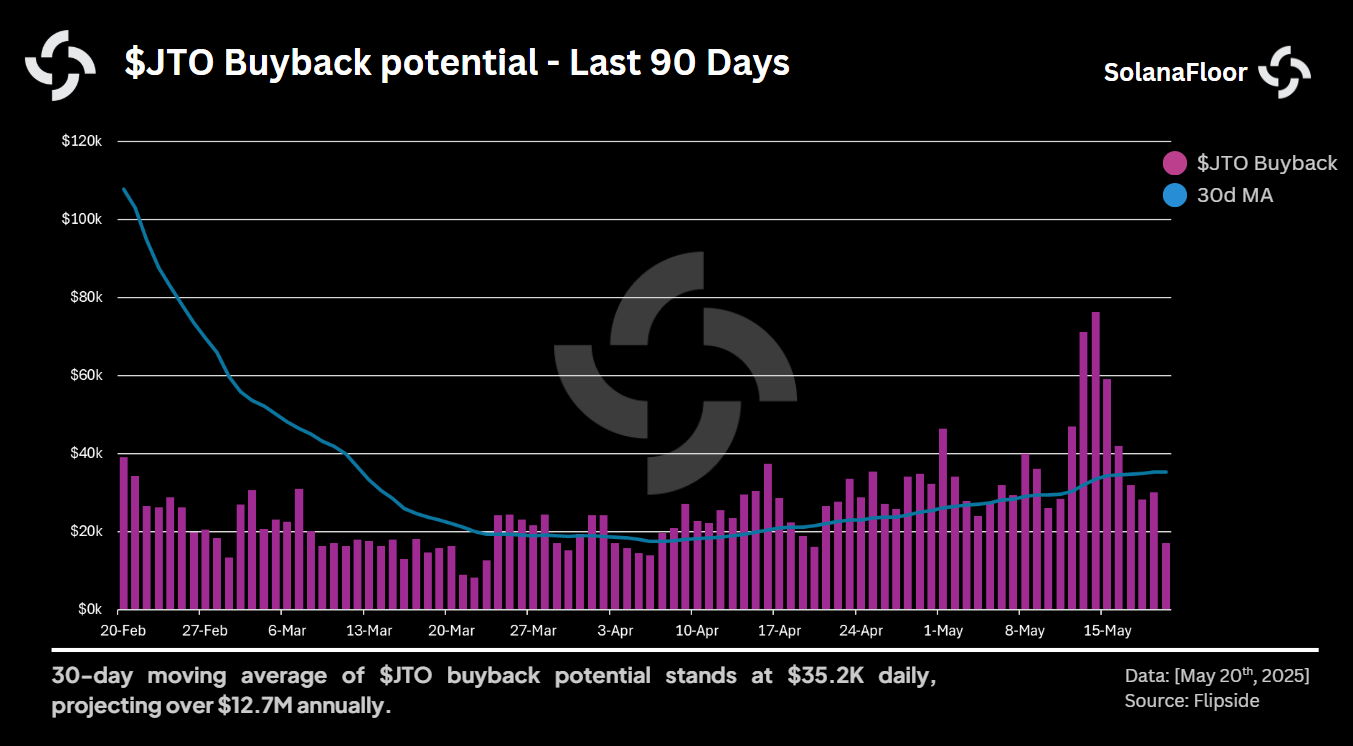 Volgens onze vorige analyse, kan Jito’s buyback programma ongeveer 11 miljoen $JTO per jaar met pensioen laten gaan, wat een geschatte deflatie van 1,1% per jaar oplevert. Onder MIP-11, is de voorspelde impact voor $MNDE veel groter—tot 49 miljoen tokens per jaar verwijderd, of ruwweg 4,9 % van het aanbod.
Volgens onze vorige analyse, kan Jito’s buyback programma ongeveer 11 miljoen $JTO per jaar met pensioen laten gaan, wat een geschatte deflatie van 1,1% per jaar oplevert. Onder MIP-11, is de voorspelde impact voor $MNDE veel groter—tot 49 miljoen tokens per jaar verwijderd, of ruwweg 4,9 % van het aanbod.
De grote kloof wordt gedeeltelijk verklaard door $MNDE’s lagere marktkapitalisatie ten opzichte van $JTO; hetzelfde dollarbedrag aan buybacks haalt een groter deel van $MNDE’s aanbod terug. Natuurlijk zal het uiteindelijke deflatiepercentage voor beide tokens nog steeds afhangen van variabelen zoals de tokenprijs, consistentie van de inkomsten en hoe volledig elk voorstel wordt uitgevoerd.
Eindgedachten: Een keerpunt voor Marinade?
Marinade’s voorstel vertegenwoordigt een verschuiving in hoe DeFi-protocollen op Solana denken over tokengebruik en treasury-strategie. Het heroriënteren van een deel van de protocolinkomsten naar tokeninkoop is één methode om te proberen een balans te vinden tussen duurzaamheid op lange termijn en verwachtingen van de gemeenschap.
Er blijven nog vragen over. Hoe consistent zullen de protocolinkomsten in de loop der tijd zijn? Zal dit mechanisme zinvolle ondersteuning bieden aan MNDE’s waarde of engagement statistieken? En hoe zal het andere gebieden van de budgetteringsprioriteiten van de DAO beïnvloeden?
Zoals met veel voorstellen in gedecentraliseerd bestuur, zal de uitkomst afhangen van de uitvoering en de zich ontwikkelende netwerkdynamiek. MIP.11 kan een nieuw model bieden voor waardeafstemming—of gewoon dienen als een van de vele experimenten in de lopende ontwikkeling van staking protocollen op Solana.



